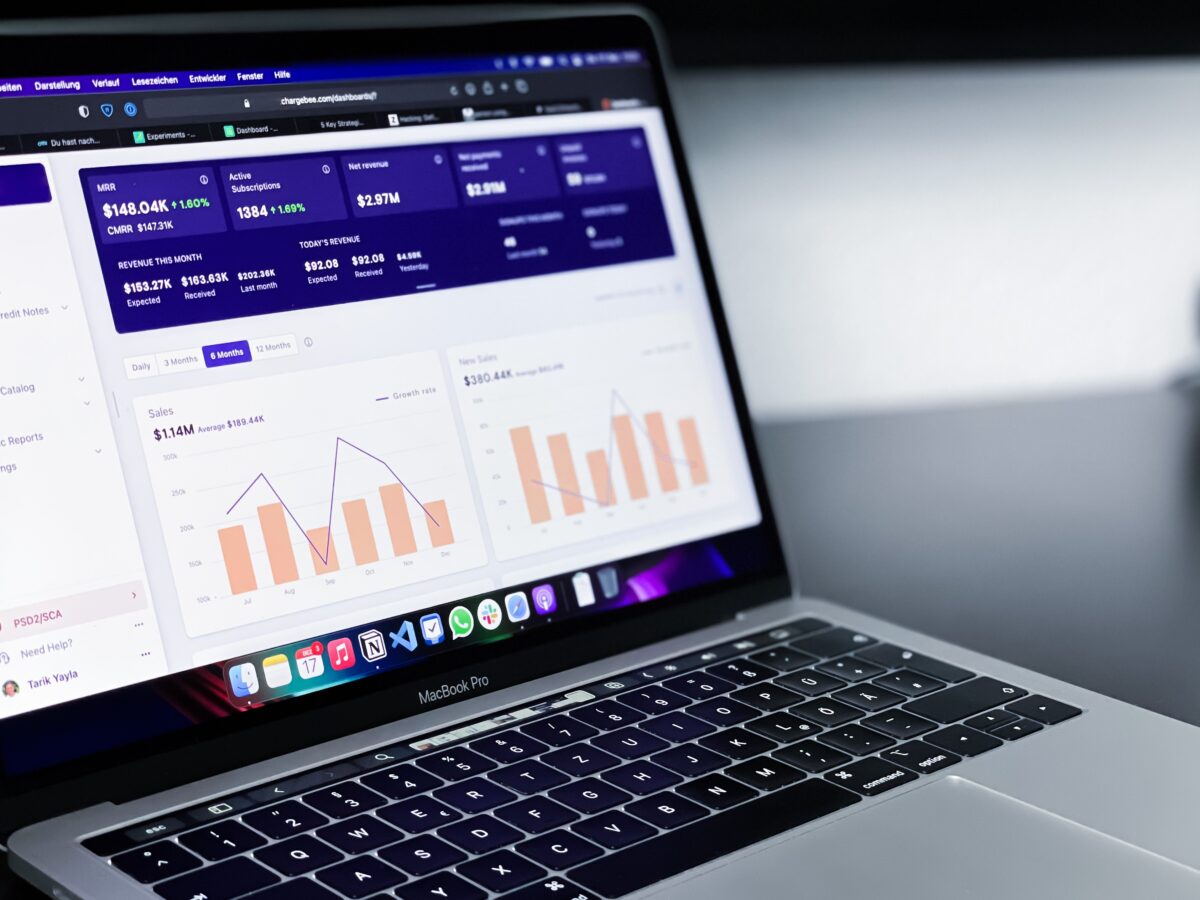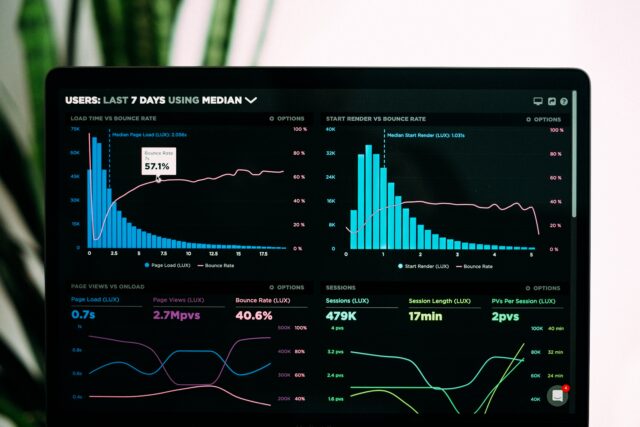As a result of the macroeconomic headwinds facing many businesses and general economic uncertainty in most markets, marketers have experienced increased scrutiny over PPC spend in the past few months.
At the same time, many of us are finding it increasingly difficult to effectively measure the ROI on advertising spend. Indeed, in a recent survey of B2B CMOs, more than half of respondents cited measurement as their biggest challenge for 2024.
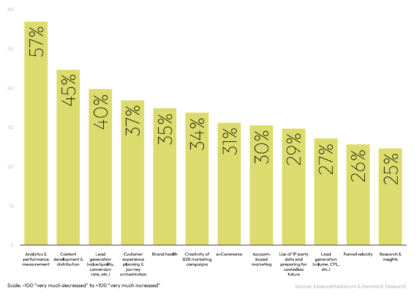
What we’re experiencing today is the result of a perfect storm of measurement challenges that have impacted our industry over the past couple of years:
- Third party cookie deprecation – Third party cookies have been phased out across many browsers, with Chrome finally set to follow suit in 2024. Third party cookies are used to identify users across the web – the lifeblood of PPC targeting and attribution as we know it.
- Apple’s App Tracking Transparency evolution – In 2021 Apple began making it easier for iPhone users to opt out of cross-app tracking through its AppTrackingTransparency (ATT) framework. This made it very difficult for large advertising platforms (such as Facebook) to determine whether their ads led to conversions.
- Increased privacy regulation – privacy legislation has been evolving globally for the past few years. With GDPR impacting marketers across Europe, and state specific legislation (e.g. CCPA) impacting marketers in North America. The most visible output of this has been cookie banners, essentially wiping out ~25% of measurable visits once implemented.
The increased scrutiny on marketing spend combined with our inability to measure ROI as reliably as we once could should act as the catalyst to rethink and future proof our approach to PPC measurement.
2024, the year the cookie finally crumbles
2024 is widely predicted to be the year Google completely phases out third party cookies across Chrome. Privacy Sandbox — Google’s privacy-preserving alternative to cross-site tracking cookies — is now generally available.
Google has now started testing Privacy Sandbox, with 1% of third-party cookies now being blocked in Chrome.
Remember, Firefox and Safari have been using ETP/ITP tracking prevention measures for a number of years already, and while we’ve experienced numerous delays from Google in the past, Google has now finally started to move away from third party cookies on Chrome.
There will no doubt be an alternative solution that enables Google to report on the performance of Google Ads in a similar fashion, but expect disruption and measurement headaches similar to what we’ve experienced in the past year with the transition to Google Analytics 4 – which in itself is designed as a system built for a future without third party cookies.
Limitations of digital attribution
Regardless of how Google evolves their approach to third party cookies in Chrome, digital attribution has huge limitations when it comes to the accuracy of its results.
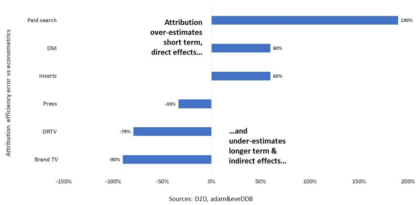
Source: Adam&EveDDB & Magic Numbers
The problem with digital attribution is that the models give too much credit to the short-term, direct effects of marketing, and over credits tactics that are typically the last step before conversion such as paid search and shopping ads.
Using only digital attribution to measure performance can lead to short-termism in marketing – putting more money into the channels that are easiest to measure. We therefore need to explore alternative measurement tactics to truly understand how effective different marketing channels are and what’s really having an impact on the bottom line.
What about multi-touch attribution?
Multi touch attribution models (e.g. data driven, linear, time decay etc.) apportion credit across multiple touchpoints throughout the buyer journey.
While multi touch attribution is strategically a better option than the traditional last click options, even the most sophisticated Multi-Touch attribution models have been delivering results similar to Last Click attribution.
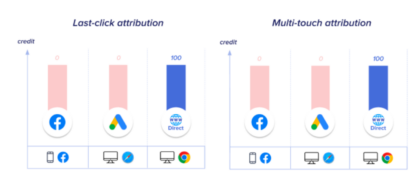
In reality, multi-touch conversion journeys are just as difficult to attribute as last click, and suffer from the same technical limitations, so there is a need to explore alternative solutions to accurately measure PPC performance.
Three methods of measuring PPC performance
If you’re currently relying on digital attribution alone for PPC measurement, then it’s time for a new approach.
Instead of relying on one measurement technique, there are in fact three methods that complement each other well, and can be used to triangulate ROI from your paid media campaigns:
- Marketing mix modelling (MMM) – MMM should be used to assess the incremental impact of your PPC investments
- Multi-touch attribution modelling (MTA)– digital attribution (e.g. Google Analytics) should be used to make day to day optimisations across paid media platforms
- Testing/experiments – should be used to A/B test media spend and assess overall incremental impact on sales
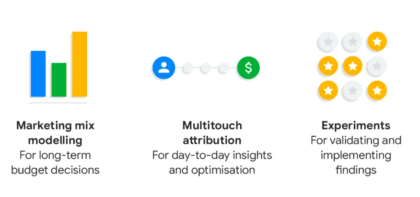
Source: Think With Google
Of all the options, expect to see more and more PPC marketers start to investigate Marketing Mix Modelling in the year ahead. Platforms such as Meta have already released their own MMM platforms, and the direction of travel is for these techniques to be more accessible to digital marketers.
Marketing Mix Modelling, or econometrics, is the gold standard of marketing measurement. MMM uses statistical analysis to untangle the drivers of business KPIs such as sales or web visits. It captures all of your key drivers – both offline and online – including the category, price promotions, distribution, advertising, competitors, seasonality and even the weather. The models don’t use cookies at all, instead using changes over time in aggregate level data to help unpick incremental sales from online ads vs. sales caused by other things.
There are some limitations with Marketing Mix Modelling – typically 2-3 years of data is required to run an accurate model. Any model will struggle to truly capture the effects of seasonality with limited data!
Of course, the best measurement frameworks use a combination of test and learn strategies to give you the answers that you need at different points in time, such as econometrics, digital attribution, and A/B testing.
Conclusion and considerations
With the current state of digital attribution, there’s a need to explore alternative measurement frameworks to better understand the incremental impact of your marketing investments.
Layering in measurement techniques such as Media Mix Modelling and experimentation will help your business triangulate ROI alongside multi-touch attribution.
Aside from this, be sure to bear in mind the following considerations to enable more effective measurement:
- First party data – Marketing gold dust in a cookie-less world, your owned data will enable more personalised ad targeting and reliable measurement.
- Value exchange – To capture more first-party data, consider what your brand offers in exchange for customer data. In B2B this is often primary research, whitepapers, gated content etc.
- Regaining lost data in Google Ads – Enabling privacy preserving features in Google Ads such as ‘Consent mode’ will instantly help you model for gaps in data due to tracking restrictions such as cookie banners.
With growing concern around online privacy, the direction of travel is clearly towards further privacy enhancing technologies and a more complex targeting and measurement landscape. Taking these small steps today will help put your business on a path to success in a privacy-first era.
